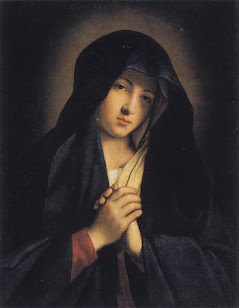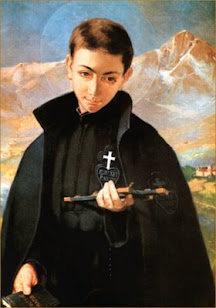February 9 marks the feast day of Saint Jerome Emiliani (also known as San Girolamo Milani, born 1481, deceased 1537). Saint Jerome, like many saints, came late to his service of the Lord by serving those around him. Rather, his early life was marked by a lack of religious conviction, as well as a lack of accountability. Born into a noble and wealthy family, Jerome grew up with few rules, and following the death of his father, ran away from home at age 15. He wandered for years, living a careless and dissolute life, until finally enlisting in the Roman army.
Records indicate that Jerome approached the army in much the same way he had lived his life, without much ambition, and quite carelessly. Shortly after his enlisting, he was captured and taken prisoner during the defense of Castelnuovo against the League of Cambray in 1508. Chained and thrown into prison, it was there, in his dark cell, that he had ample time to contemplate the Lord and learn to pray. Following a lengthy imprisonment, he prayed to Our Blessed Mother for freedom, and miraculously his chains were loosed following an apparition. Leaving the dungeon, he traveled to nearby Treviso, hanging the chains on the door of a church there, as an offering to Our Lady. (It should be noted that 64 of the 265 churches in the diocese of Treviso are dedicated to The Blessed Virgin!).
Following his escape from the dungeon, Jerome’s life took on a different quality. He returned to his family, taking over the religious instruction of his nephews. Saint Jerome is believed to have been the first to introduce the question and answer style of teaching the Catechism, still used today. He was appointment mayor of Treviso for a short time, but left his post to being studying for the priesthood. Following his ordination, he dedicated himself to the service of those around him, especially the sick, poor, orphans, and the exploited. Again, the events of history influenced his life as Northern Italy suffered a great famine, which was followed by an outbreak of the spotted fever plague. Having money saved from his inheritance, army service, and time in politics, Saint Jerome dipped into his own coffers to feed the starving and nurse the ill. He eventually gave all that he had in service to those who were suffering. At night he was said to roam the streets, offering Rites to those who were dying and burying with his own hands those who had fallen and been forgotten. Saint Jerome became so adept at tending to the sick and ill he developed a reputation as a healer.
During this time, the number of orphans grew dramatically, as the plague accomplished its deadly business. At first, Saint Jerome took these homeless orphans into his home, but their numbers were too great. He eventually founded six orphanages, for both boys and girls in need of homes, providing safety, healthcare, and religious instruction. He founded a shelter for those who had been exploited by society, including prostitutes. He established a hospital which provided healthcare to all (even those considered “incurable”). Under his leadership, the Order of Somaschi (Company of Servants of the Poor) was founded. Jermoe stated the principal work of the community was the care of orphans, poor and sick, and demanded that dwellings, food and clothing would bear the mark of religious poverty. Eventually, a seminary followed, and today the order continues to provide care to the needy in 12 countries. Saint Jerome traveled throughout the region, establishing organizations of mercy dedicated to those in need.
During a second plague epidemic in 1537, Jerome fell victim to the epidemic while ministering to the sick. Today, he is remembered as a gentle and compassionate man who put service to the Lord through service to others above his own safety. Saint Jerome is the patron saint of orphans and abandoned children.
Today, an estimated 100-150 million children live on the streets worldwide (World Health Organization, Global Action for Children). These children lack nutrition (146 million), safety, and education (120 million). Many have preventable illnesses, 11 million children dying each year from diseases that are treatable. Between 2 and 3 million children worldwide are HIV positive. 40 million suffer child abuse, 2 million have been sold into slavery, and nearly 2 million forced into prostitution. More than 352 million children are forced to work, oftentimes in deplorable and unsafe conditions.
These statistics are staggering, and while many of these crimes against humanity occur far from our daily lives, many also occur in our backyards. Saint Jerome felt a strong call to helping those in need, a call to social justice. As members of the global community, we, too, are called by Christ to raise our voices to achieve basic respect and dignity for all of God’s children. Today, on the feast of Saint Jerome, consider how you might make a difference in the lives of children struggling throughout the world.
God of mercy,
You chose Jerome Emiliani to be a father and friend of orphans.
May his prayers keep us faithful to the Spirit we have received, who makes us Your children.
Grant this through our Lord Jesus Christ, Your Son,who lives and reigns with You and the Holy Spirit, one God, for ever and ever. Amen
Day 40 of 365
Prayer Intentions: For the children of the world, especially those who are suffering; For orphans awaiting adoption; For those in the adoption process
Requested Intentions: Those planning for surgery (L); Those who are unemployed or in danger of losing jobs (A); Those fighting depression (L); For a growing love of the Eucharist and peace within a family (A).
Why pray the Rosary every day for a year?
Each time the Blessed Virgin has appeared-- whether it be to Saint Bernadette Soubirous at Lourdes; to Lucia, Jacinta, and Francisco at Fatima; or to Mariette Beco at Banneux-- she has asserted the importance, saving grace, and power of praying the Holy Rosary on a daily basis. Based upon her words, the Rosary is penance and conversion for sinners, a pathway to peace, an end to war, and a powerful act of faith in Jesus Christ. Pope Paul VI presented the Rosary as a powerful means to reach Christ "not merely with Mary but indeed, insofar as this is possible to us, in the same way as Mary, who is certainly the one who thought about Him more than anyone else has ever done."
To show us how this is done, perhaps no one has been more eloquent than the great Cardinal Newman, who wrote: "The great power of the Rosary consists in the fact that it translates the Creed into Prayer. Of course, the Creed is already in a certain sense a prayer and a great act of homage towards God, but the Rosary brings us to meditate again on the great truth of His life and death, and brings this truth close to our hearts. Even Christians, although they know God, usually fear rather than love Him. The strength of the Rosary lies in the particular manner in which it considers these mysteries, since all our thinking about Christ is intertwined with the thought of His Mother, in the relations between Mother and Son; the Holy Family is presented to us, the home in which God lived His infinite love."
As Mary said at Fatima, "Jesus wants to use you to make Me known and loved. He wishes to establish the devotion to My Immaculate Heart throughout the world. I promise salvation to whoever embraces it; these souls will be dear to God, like flowers put by Me to adorn his throne."
Subscribe to:
Post Comments (Atom)




Jacob - Wonderful history on St. Jerome and a beautiful reflection. Do you have a favorite source from which you obtain all of your information and pictures?
God Bless!
Thanks, Ann. I appreciate your comments, and glad you found the reflection helpful. The crimes against children in this world are horrifying!
As for my sources, I have a few books which I reference, but also a few reputable websites that I look to (it varies depending on what I am writing about). i search for the photos in the public domain.
Thanks for reading!